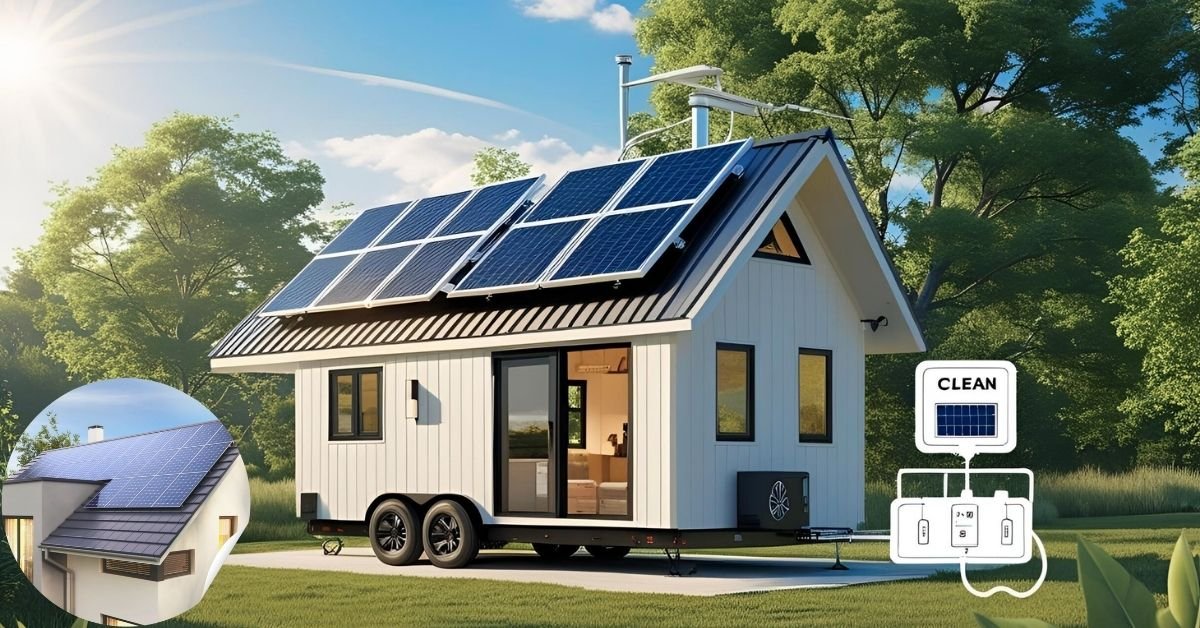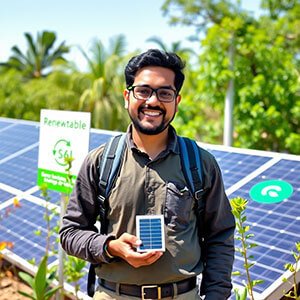Tiny house living is exploding in popularity. But powering them sustainably? That’s where off-grid solar systems are rewriting the rules. From eco-conscious minimalists to digital nomads, more people are ditching utility bills for sun-powered freedom. Here’s what you need to know before making the switch.
What Is an Off-Grid Solar Systema nd Why It’s Perfect for Tiny Homes
An off-grid solar system is a self-sufficient power setup that doesn’t rely on the electrical grid. It typically includes solar panels, a battery bank, an inverter, and a charge controller, all working together to keep your tiny home running. Unlike grid-tied systems, off-grid setups store excess energy for use when the sun isn’t shining.
Tiny houses are uniquely suited for off-grid solar. Their compact size means lower energy demands, and their mobility allows owners to chase the sun literally. Plus, with rising electricity costs and unpredictable blackouts, solar offers both financial savings and peace of mind.
2025 Trends: Why Off-Grid Solar Is Surging in the Tiny House Movement
The demand for portable, sustainable power has never been higher. In 2025, off-grid solar kits are flying off shelves and dominating tiny house forums from Reddit threads to YouTube unboxings. The rise of remote work and eco-conscious travel has created a new class of mobile homeowners seeking reliable, renewable energy.

Technology is catching up fast. Lithium iron phosphate (LiFePO4) batteries, known for their long life and stability, have become the gold standard for off-grid storage. Meanwhile, next-gen monocrystalline solar panels offer record-breaking efficiency, meaning smaller setups can now produce more power than ever before.
Some states are even incentivizing off-grid installations through tax credits or rebates, making the switch more affordable. And as wildfires, storms, and rolling blackouts disrupt communities nationwide, resilience is becoming a selling point all its own.
For those drawn to minimalism and sustainability, going solar isn’t just a tech upgrade, it’s a statement. A commitment to living lighter on the planet while staying fully powered.
How Much Power Do You Really Need? A Quick Tiny House Energy Audit
Step-by-Step Analysis:
- List your essential appliances and devices
Think lights, fridge, laptop, fan, and perhaps a small heater or induction cooktop. - Estimate daily watt-hours for each
Multiply each item’s wattage by how many hours you use it per day. - Calculate total daily consumption
Add all the numbers to find your daily energy needs in watt-hours (Wh). - Add a buffer
Build in at least 20-30% extra to account for cloudy days, future devices, or seasonal changes.
Tools and Apps That Help:
- Solar Calculators: Try PVWatts or the NREL Solar Calculator to estimate solar output based on your location.
- Home Energy Apps: Sense, Ecojoko, or EnergyHub let you track real-time usage and trends.
Pro Tip: Understanding your usage upfront can prevent costly mistakes; both overbuilding and underpowering are common beginner pitfalls.
Best Off-Grid Solar Setups for Tiny Houses (2025 Buyer’s Guide)
Not every tiny home has the same energy appetite. Here’s a quick look at the most common off-grid system sizes and what they support.
3 Recommended System Sizes:
- Basic Setup (400W – 800W):
Best for weekend cabins or minimalist van conversions. Power lights, phone, and small electronics. - Mid-Tier (1000W – 2000W):
Supports full-time living with essentials like a fridge, fan, and internet devices. - Premium Setup (3000W+):
Ideal for all-electric homes with AC, kitchen appliances, and entertainment systems.
Top-Rated Products:
- Portable Solar Kits:
Jackery Explorer, Bluetti AC200L, and EcoFlow Delta series offer plug-and-play ease. - Inverter/Charger Combos:
Victron and Renogy lead the pack with reliable, high-efficiency options. - Smart Lithium Battery Banks:
Battle Born and Ampere Time provide scalable, maintenance-free storage.
Installation Tips:
- Roof vs Ground Mounting:
Roof mounts save space, but ground arrays can be angled for max output. - Mobile vs Stationary Setups:
RVers may prefer foldable or suitcase-style panels; stationary homes can invest in more permanent racking. - Cost-Saving DIY Tips:
Pre-wired kits reduce complexity, and secondhand panels or local co-ops can slash upfront costs.
Real Stories: How These Tiny House Owners Went Fully Off-Grid
Meet Sarah and John Raz from Arizona. After switching to a 2kW off-grid solar system, they’re saving nearly $1,800 per year in electricity costs. But more than that, they love knowing their home is immune to regional blackouts.
Nasir Abdullah, a muslim solo traveler in her converted Sprinter van, powers her mobile life with just 600W of solar and a lithium bank. She writes, works, and cooks on the road, all without plugging in.
You can read: Sleep Anywhere, Anytime: Best Solar Generators for CPAP Machine Users Revealed.
The Henry family of three took a hybrid approach, combining solar with a backup propane generator. Their system costs under $6,000 and supports heating, lighting, and internet, even in a snowy Vermont winter.
What unites them? A deep sense of independence, security, and environmental stewardship. And almost all of them say: “I wish we’d done it sooner.”
Their biggest lesson? Start small, then expand. Many wish they’d tracked energy use before buying panels.
Is Off-Grid Right for You? Key Questions to Ask Before You Commit
Before you make the leap, ask yourself:
- Do you live in a sunny area?
More sunlight = smaller (and cheaper) solar setups. - How much energy flexibility do you need?
Some trade-offs may be necessary, especially in winter. - Are you comfortable with DIY or light maintenance?
Systems need occasional panel cleaning and battery checks.
Pros and Cons at a Glance:
✔ Pros:
- Energy independence
- Lower long-term costs
- Eco-friendly lifestyle
- Resilience during outages
✖ Cons:
- Higher upfront investment
- Learning curve for setup and maintenance
- Location-dependent performance
Key questions to ask before you invest:
Q: How much power do I really need?
A: Add up your appliance watt-hours and add a buffer for safety.
Q: Should I DIY or hire a pro?
A: Beginners can start with plug-and-play kits, but custom systems give more flexibility.
Q: What maintenance is required?
A: Clean panels seasonally; check battery voltage monthly or use smart monitoring apps.
Q: How long will my system last?
A: Panels can last 25+ years; lithium batteries typically need replacing every 5-10.
Previous Post: Solar Water Pump for Hydroponics: The Future of Farming or Just a Green Gimmick?
Ready to Unplug? Share Your Tiny Solar Story
Whether you’re planning your first build or already living off-grid, we want to hear from you. Drop a comment below with your setup, lessons learned, or questions for others in the tiny house solar community.
Know someone dreaming of a simpler, cleaner life? Send this article their way and help fuel the off-grid revolution one click at a time.


